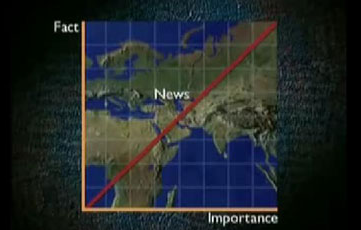You don't need to be a modern day Petronius to imagine the chaos of this digital dinner party
In his wonderfully vicious spoof documentary, Brass Eye, Chris Morris correctly - with a slight interjection of cynicism - calculates that "fact x importance = news." Essentially, the news is current events presented through any one of today's multiple channels - including speech. From the early town crier's broadcast echoing through the streets to today's online newswires, the line between old (print) and new (digital) media has significantly blurred.
What now defines 'news' has also become a blurred concept - but this is old news. The line between blogging and professional journalism has (for good or bad) become obscured and celebrity rags still contribute more (print and web) page space to reality TV than world news. It's certainly more palatable.

In the midst of print journalism's decline, the incline of mobile news feeds and a flurry of news on demand, up crops your brand ready to leverage some of these exciting news stories and events and make the most of the spontaneity and transience. Add your brand's reputation, your brand guidelines and then global censorship into the mix and you've got a melting pot of procedures and reams of red tape. Launching your brand, certainly into the digital news sphere, can seem daunting.
The sporting event hosted in London this summer is a great example of how censorship can affect a brand's digital journey - especially when it comes to online PR. David Cameron promised that the wink wink would be a "showcase of national enterprise and innovation." However, nothing has proved more constrictive. The organisers have almost managed a complete language lock down, providing a list of fairly common nouns (types of metal, for instance) that cannot be hijacked and used for promotional piggybacking. The marketing world is currently in a state of chaos, clutching these global censorship guidelines, wondering whether it is safe to drink Pepsi, but sticking to the approved Coke during brainstorms. And regarding chips - don't go there.
Before throwing those draft press releases into the waste paper basket and going back to the PR drawing board, it's important to read through the lines of censorship. We live in an age of free speech and if you've got something to say, there's always a way of saying it.
The trick is to leverage key events and news that you can naturally associate your brand with, add sources and back up your position with timely, relevant commentary. Jump through censorship hurdles by being smart with your language; allude to events, play on words - even pun - and write your marketing materials in a dignified and controlled manner. Whether you take your own brand news and keep it as a standalone piece or choose to take advantage of a timely event, it is advisable to always intertwine current events and both local and worldwide activities. Not only does this involve your brand with the world at large but those events and activities are presently high volume search terms. Creativity goes a long way.
The Internet is possibly the greatest icon of the free world and provides the best platform for a marketing campaign. Your brand guidelines might be reams long but if you can leverage the right events, project news at an appropriate time and understand what you can and cannot say, then you're laughing all the way to the top of Google News. The news is anyone's game - whether you're making it, supporting it or adding to it.
At time of upload, this was the case.

